On Safety Pins and Stories; On Listening and Speaking Out
How do we start at the beginning?
Do we begin with an election, an election between two flawed human candidates, but also one where one candidate had demonstrated, through decades of actions, her qualifications, and the other had demonstrated (also through decades of actions), his political inexperience, his bullying, and his lack of self-control?
Or do we begin farther back, with President Obama and those who wanted to insist that the election of a black president meant the United States no longer had any race issues?
Or even farther, to the inescapable fact that our nation, our “city on a hill,” was built on twin towers of shame: the eradication of the people who lived here before the first wave of immigrants arrived, and the tradition of slavery that ended not so long ago?
I don’t know. America’s history is in many ways no worse than most other modern nations. And there is much to be proud of here, much that Americans rightly hold up as the beacon they hope to be to the world. This is a complicated, complex issue that many smart people will spend years unraveling. But I am a storyteller, and more specifically, a children’s book writer, so I am trying to make sense of this story.
All stories have heroes and villains, scapegoats and tragic missteps. The best stories make us think…really think…about who is good or bad, and how the events unfold.
Hillary Clinton lost the presidential election to a man who has, for the last year, been a megaphone of fear and anger for this country. His election tells us less about him — a funhouse mirror that warps and distorts what it reflects in America — than it does about our country. People are angry about their loss of the American dream (whether mythical or real), about the fact that they used to know their place in the world and now that place is less clear, about the fact that while President Obama talked about hope and opportunity, they felt stuck and lost and unable to see a path forward. It matters hugely why so many people felt so lost and betrayed, and which policies and politicians truly failed our population. But that’s not the story I’m going to talk about.
I’m going to talk about what comes next.
My heart hurts, actually hurts in my chest, and has since last Tuesday night. I ping-pong back and forth between slowly feeling better, slowly getting back into some parts of my normal life (cleaning the bathroom, figuring out who’s taking care of the cats next week), and feeling incapacitated with sadness and fear over what comes next. In some ways I’m afraid to get back to work, because I’m afraid that I, as a white woman in a small liberal Northeast city, will lose focus. I’ll go back to tutting over the news, and donating money when I have it, and forget that an earthquake just jolted my country. I can’t allow that to happen. We are surrounded by damage, and the long-term consequences are unknowable.
One action that people took right after the election was to put a safety pin on their jacket. This small gesture began in England after that country voted, in a similarly surprising and upsetting vote, to leave the European Union. The vote was largely related to how the British felt about the recent influx of immigrants, and the result was a resounding and angry statement that they are not welcome. The safety pin, there and now here, is supposed to symbolize a welcoming presence; a way to say, without words, “I am on your side. I did not vote to exclude you. I will stand up for you.”
After last Tuesday, the safety pin movement grew quickly. On social media people posted photos of themselves proudly wearing a pin, and a group of children’s book illustrators created beautiful artwork of inclusivity, showing their characters wearing the symbolic safety pin. But then a backlash arrived. People of color, and of other maligned groups, spoke up that those wearing pins were not actually willing to speak their values, and were standing by while vulnerable individuals were being harassed. There were accusations of people wearing pins to feel good, but not to support those who needed it. In response, some white folks felt angry and hurt, like their goodwill was being thrown back in their faces. Understandable, I suppose. Those who are most at risk do not want to see feel-good symbols that don’t translate to action. Those who truly want to create a safe space don’t want to feel accused and defensive, like they are the bad guys.
Stories, again, are complicated.
Another common response after last week was a call to get over the animosity of the election, to move forward together, and to give the new administration a chance. These are all reasonable ideas. Or would be, in a reasonable time. But as Maya Angelou famously said, “when someone shows you who they are, believe them the first time.” The president-elect has shown us who he is. He has mocked a physically disabled reporter. He has called for his political opponent to be jailed, despite the fact many aggressive FBI-led campaigns against her have turned up no wrongdoing. He has spoken of assaulting women. He has called for a religious group to be rounded up and registered. Again, in a normal time, moving forward and assuming the best of someone is reasonable. In this moment, the calls to do so are really calls to normalize and accept what is not normal.
Online and in real life, I’m surrounded by like-minded people. We are all mourning, trying to make sense of what just happened. Specifically we are trying to both understand how we can be so disconnected from our country, and also to figure out what happens now. This presidency is unprecedented in modern times. Someone running on a platform of autocracy and fear has won the highest office in the land. Will our system of checks and balances be enough to hold him to what I’ll call the ongoing workaday hurtful policies against women’s rights, LGBTQ rights, healthcare, global environment and so on? Or are we in uncharted waters? Will he cut off access to the media? Force a religious registration that echos horribly of Germany at the rise of Hitler? What is going to happen? What can we do?
What can we do?
When writing my books, I sometimes lose my way. I get bogged down in details and write paragraphs, sometimes whole chapters, that do nothing to move the story forward. When this happens I have to regroup, read over my original outline, and try to remember what I’m aiming for. That is where I am now. I cannot get bogged down. I have to remember the story I want to tell, and that is a story of resistance and positive action.
So what can we do?
Here’s what I think:
- I think that wearing a safety pin, or an “I’m with Her” button, or a Black Lives Matter button, is a great idea. It shows others that you support something and that you’re willing to show it.
- I think wearing a safety pin and not practicing HOW you are going to intervene, how you will speak up on a subway, in the cafeteria, on the school bus, in the PTO meeting, is a bad idea. It’s scary and hard to stand up. It takes preparation and practice. Here are three great links on how to figure out what to do:
- I think the biggest risk right now is that people who are angry and want change will walk away from this movement. That people of privilege will get offended or feel unwelcome, or that people who are most vulnerable will get angry or despair. I think we — meaning all of us who oppose the direction of our country — need to stay focused on our common goals, even as we disagree and debate and speak truth to each other. Complacency and cynicism are our enemies. We must fight against them.
- I think those most at risk have a right to be angry and skeptical that the most privileged among us will keep fighting. I think those of us with privilege have to sit with that, not get defensive, and work to prove that yes, we are going to keep showing up.
- I think we need to speak up when it is scary to speak, and listen when it is uncomfortable to listen.
- I think walking away from the fight is a terrible idea.
- I think that even as we all work together on the big issues, we also each individually need to pay attention to the smaller issues close to home. In the children’s book world, the safety pin artwork is glorious, and hopefully teachers will use them in classrooms to cultivate inclusivity and dialogue. But let’s also look at publishing, and how much work we have to do to bring more diverse voices to children. Again, we need both. We need to stand up to overt hatefulness, and also look at more insidious systems that we ourselves might be complicit in maintaining.
- I think it is easy to be motivated now, but much harder to remain motivated for the next four years. To that end, I’ve created a challenge for myself, called #SustainedOutrage. I have pledged that every day, since the day after the election and until election day 2020, I will take an action for change. I will not get complacent and slip back into my privilege. I will not lose focus. I will keep on. What will I do for the next 1449 days? Not sure, but here’s a sample of what I’ve done so far:
- Set up a recurring monthly donation to the American Civil Liberties Union
- Wrote a letter of support to a dear friend who took weeks off from her job to work on the campaign
- Donated my books to an LGBT-friendly church in Montana that needed some love
- Called and wrote my elected officials to oppose the new president’s political appointments
- I hope you will join me with your own acts of #SustainedOutrage — share with me on Twitter or Facebook if so.
Finally, I think this story is far from over, and that we all need to write the next chapter together.
ONWARD.

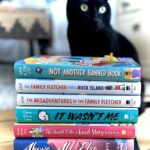



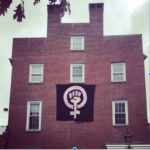
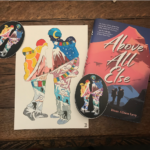



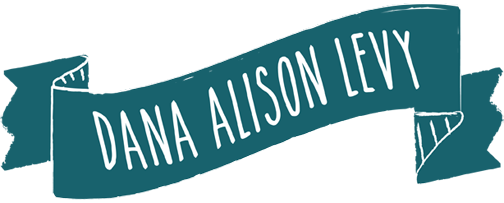
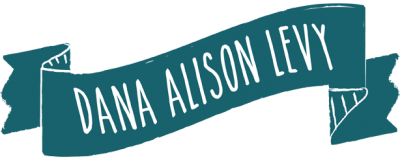
Recent Comments